|
|
Post by linefacedscrivener on Dec 1, 2021 16:10:20 GMT -5
 Tong War [Chinatown Nights] (1929) Tong War [Chinatown Nights] (1929)
“To a lesser extent I enjoyed Tong War.” -Robert E. Howard to Harold Preece, ca. September 1929 Release Date: March 30, 1929 REH Rating: * * * * The film was based on Tong War by Samuel Ornitz, which was based on the real Tong Wars (1880-1921). The Tong Wars grew out of two mid-19th century events, the Gold Rush and the building of the transnational railroad. The Chinese came to America to work the mines and, when that ran dry, the railroads. By the post-Civil War era, the Chinese were a strong presence in the cities along the California coast with the heaviest concentration in San Francisco. When the Chinese came, they brought with them their gangs and their warfare among rival gangs. Chinatown became the epicenter of these wars and because of what would today be called collateral damage, Americans went to war with the Tongs to eliminate the threat. It was not so much American law enforcement or the people eliminating the threat, but the Great San Francisco Earthquake of 1906. That was the beginning of the end for the Tong Wars, but not necessarily the Tongs. Samuel Ornitz was a social worker from New York City who began writing novels and plays. In 1928, he went to Hollywood to become a screenwriter, and he secured his first screenwriting assignment the following year. He wrote or co-wrote 29 screenplays during his career. Chinatown Nights (1929) was one of his first, though not highly successful credits. Probably his most successful credit was for the film adaptation of the comic strip Little Orphan Annie in 1938. He was one of the founders of the Screenwriter’s Guild, but was blacklisted from Hollywood at the beginning of the McCarthy era. He turned to writing novels.  The American Film Institute gives the following synopsis on the movie: “A Chinatown tourist bus is caught in the middle of a tong war, and in the resulting confusion, society woman Joan Fry is left behind. Chuck Riley, the white leader of a tong faction, pulls her from the dangerous streets and keeps her overnight in his apartment. The following morning, Joan leaves, returning later with friends; Chuck again saves her life. Joan falls in love with Chuck and moves in with him, renouncing her former life. She tries to get Chuck to reform, and he throws her out. Joan wanders the streets, and Boston Charley, Chuck's rival, gets her drunk and sends her back to Chuck with a humiliating letter pinned to her frowsy sweater. Chuck, moved by Joan's condition, wrecks his dance hall and leaves Chinatown with her, looking for a new beginning and a brighter tomorrow.” The film was released as Chinatown Nights, but was also known as T ong War. When filming began on the movie, it was intended to be a silent film. However, when they began to finish the film, they decided to turn it into a “talkie.” Because they had already filmed it, they used the dubbing process to add the voices. They did not do a great job, but it is usually not too distracting. There are times where it is grossly obvious and sometimes comical, such as when the police sergeant gives order to his platoon of police and his voice doesn’t even come close to matching his lips. Unlike Howard, I did not really enjoy watching this film. Howard did say, “to a lesser extent,” so it was in comparison to another film, but because he said he enjoyed it, just not as much, I gave the movie on his behalf four stars. I would have given it one. The film starts off truly dealing with images of the Tong Wars, with a number of shootings and killings, but then devolves into a horrible love story in which both the leads are irritating. I would not recommend anyone bother. However, you may have different tastes, so, you may watch it below and be your own judge. The film was directed by William A. Wellman, produced by David O. Selznick, and was released by Paramount Pictures. It is 83 minutes long and was released on 8 reels. |
|
|
|
Post by linefacedscrivener on Dec 6, 2021 16:11:44 GMT -5
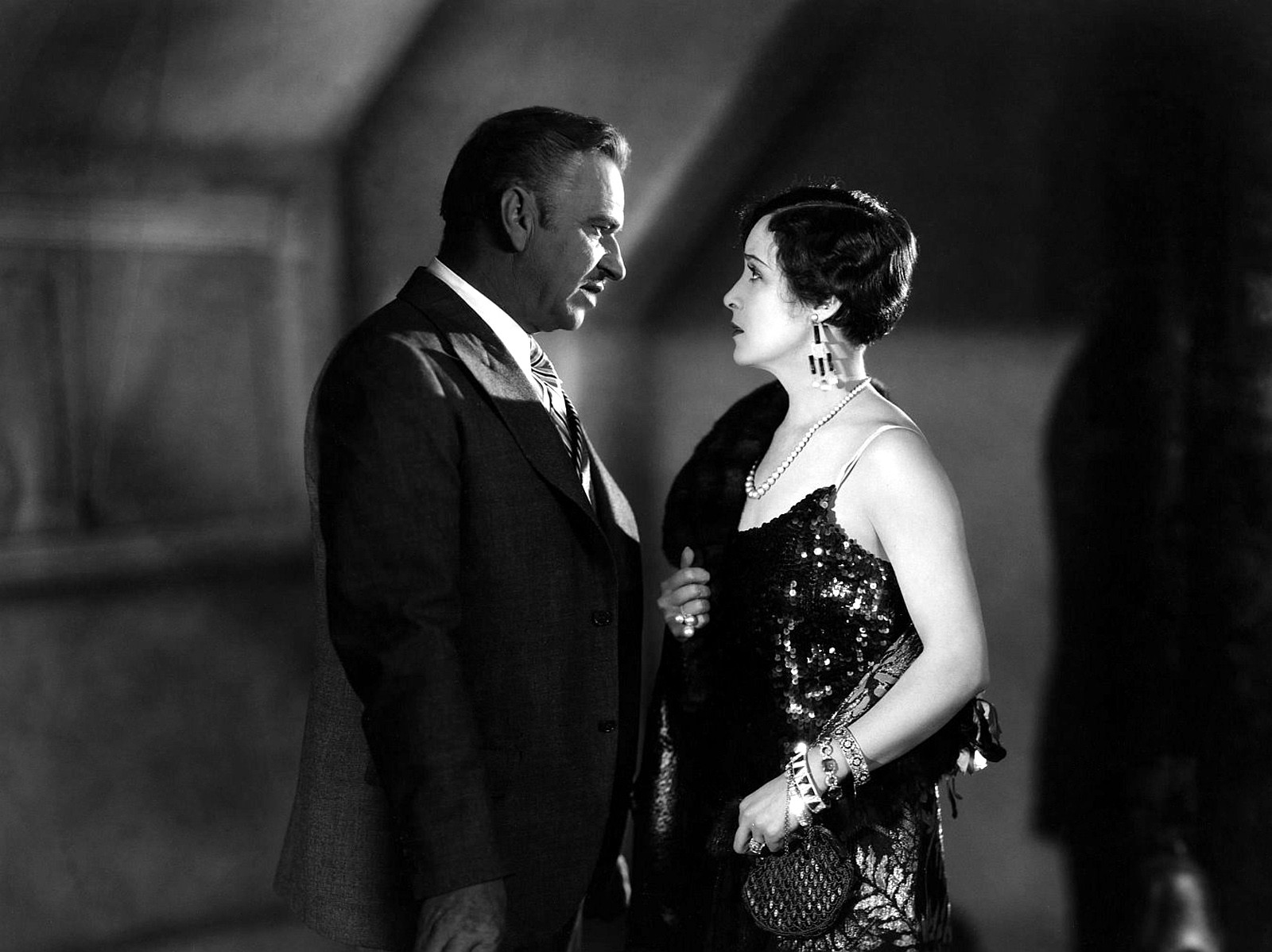 Tong War [Chinatown Nights] (1929) Tong War [Chinatown Nights] (1929)
“To a lesser extent I enjoyed Tong War.” -Robert E. Howard to Harold Preece, ca. September 1929 Wallace Beery (April 1, 1885-April 15, 1949) plays the lead role of Chuck Riley in the film. He was born in Clay County, Missouri, and when he was 5 years-old, the family moved to Kansas City, Missouri, where his father was a police officer. He ran away from home several times before finally running away for good at the age of 16. He joined the Ringling Brothers Circus (RIP), and became an assistant elephant keeper. He began working with the other animals, but after getting clawed by a leopard, he called it quits. He traveled to New York and began appearing on Broadway, starting with bit parts and building up to some more meaty roles. He moved to Chicago in 1913, and made some film shorts, before moving on to Hollywood. Like Broadway, he appeared in some minor parts, started to get noticed, and eventually was playing in lead roles, often the villains, such as when he played Pancho Villa in Patria (1917). Beery is a generally recognizable character actor for his pugnacious looks. One critic described him as always playing roles that were "tough, ugly, slow-thinking and easy-going." He soon began appearing in a number of hit films and he generated an impressive line of movies including roles in films like The Sea Hawk (1924), The Lost World (1925), Casey at the Bat (1927) and B eggars of Life (1928). He then landed the role in Chinatown Nights. Howard would see him the following year playing Pat Garrett in Billy the Kid (1930), and after making the film The Champ (1931) and winning the best actor Oscar, he had become a star. He definitely played in some roles that Howard would have liked. It is unknown if he saw The Champ.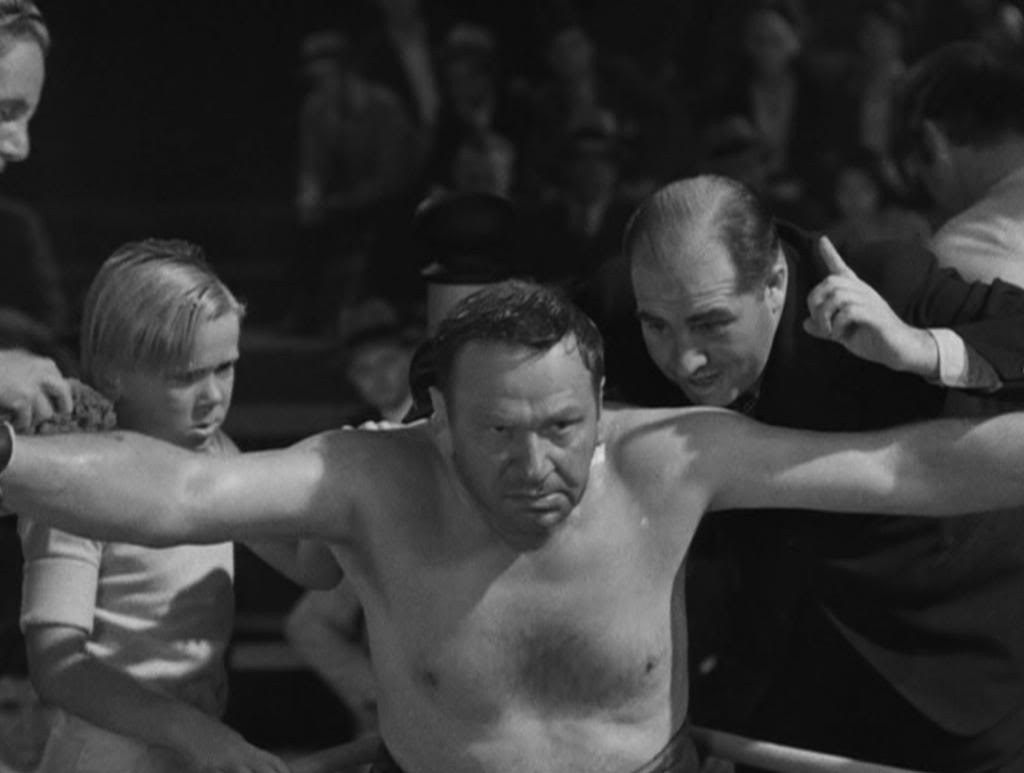 |
|
|
|
Post by linefacedscrivener on Dec 10, 2021 13:26:34 GMT -5
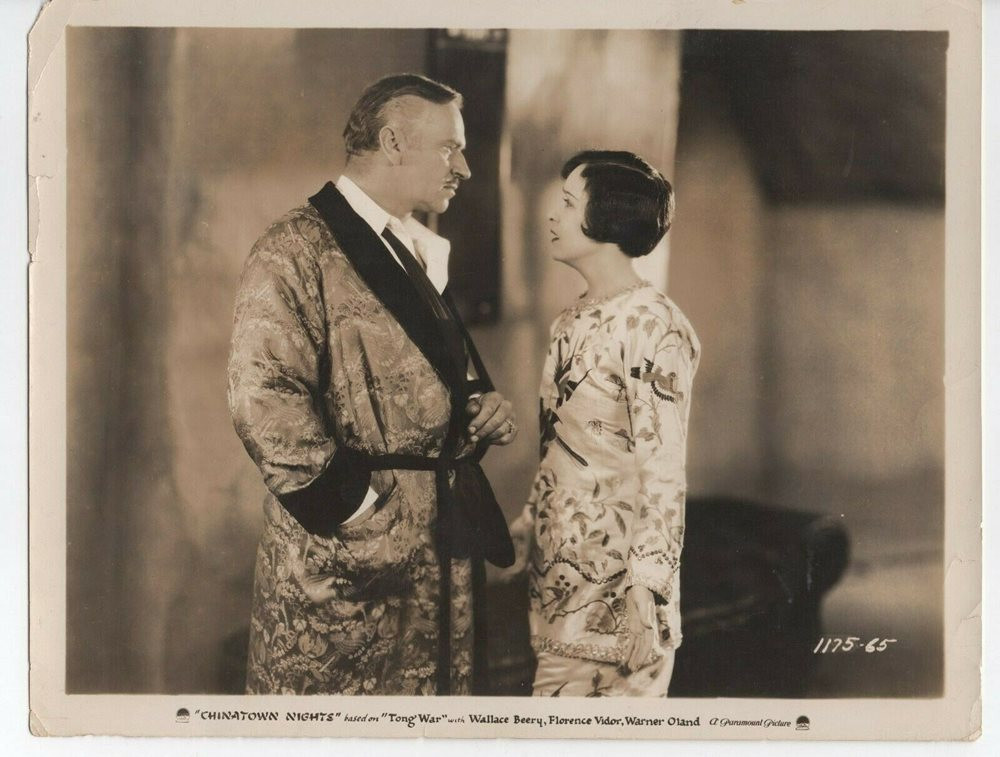 Tong War [Chinatown Nights] (1929) Tong War [Chinatown Nights] (1929)
“To a lesser extent I enjoyed Tong War.” -Robert E. Howard to Harold Preece, ca. September 1929 Florence Vidor plays the lead female in the movie. She plays Joan Fry who seems to enjoy putting herself needlessly in danger and, of course, falls for the white leader of one of the Tong gangs. She was, like Howard, a Texan, born on July 23, 1895, in Houston. She went to Hollywood and began acting in the silent films in 1921. She had a good career until 1929, when the talkies came along. This was her first talkie, but when it came to dubbing the film in post-production for the talking portion, she became flustered and unnerved. She decided against the whole dubbing of her voice and quit, so the voice in the film is not hers. And that was it for her career—she refused to do another movie with sound. |
|
|
|
Post by linefacedscrivener on Dec 15, 2021 16:15:00 GMT -5
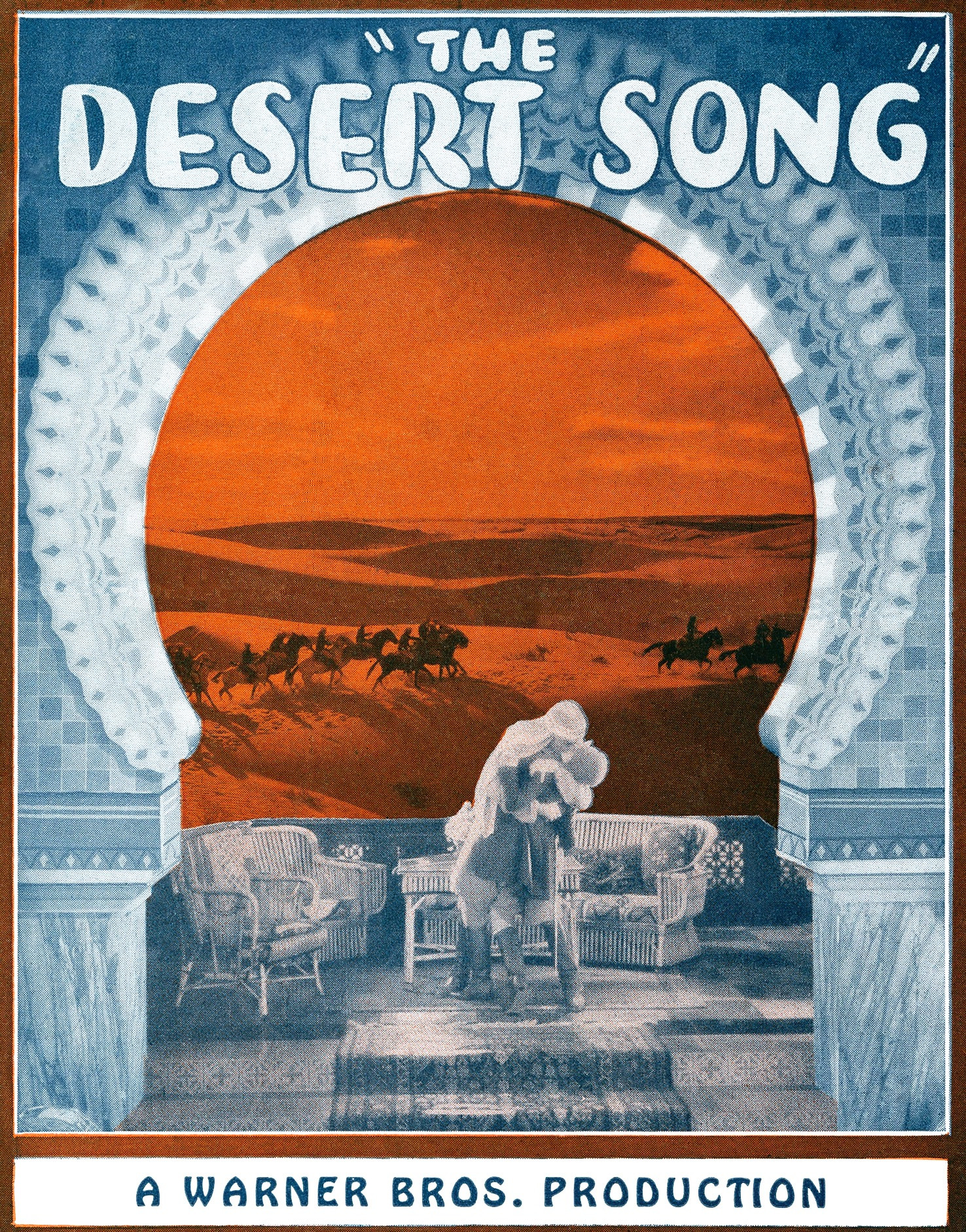 The Desert Song (1929) The Desert Song (1929)
“The Desert Song—gah! Pardon me while I vomit. The only part of it that was worth two cents was the comedy Johnny Arthur and Louise Fazenda pulled.” —Robert E. Howard to Harold Preece, ca. September 1929 Release Date: April 8, 1929 REH Rating: *
The film opens with the words: “From out of the desert wastes of Morocco appeared a sinister figure. Men whispered his name—‘Red Shadow!’" And then they show a horde of men on horseback, heavily armed – man, what a great opening! And then, they pan in on the “Red Shadow” who is wearing a Lone Ranger mask, barely has any hair, and he starts singing! AHHHHHHHHH!! No wonder Howard said, “gah!” Now, just to note, I like musicals, but ones that are well-done, Phantom of the Opera! This is not. It was was horrible! Really bad dialogue and even worse songs. But, I am getting ahead of myself. The American Film Institute provides the following synopsis on the film: “The Red Shadow, the leader of a tribe of Riff horsemen, is in actuality Pierre Birbeau, the seemingly weak and simple-minded son of the commandant of French forces in the Moroccan desert. Pierre's father champions a marriage between Margot and Paul, and Pierre, who loves the girl passionately, dons his disguise and kidnaps her, taking her to the desert palace of Ali Ben Ali. The commandant follows with a troop of men and challenges The Red Shadow (his own son) to a duel. The Red Shadow refuses the challenge and is disgraced in front of his men, losing their respect. The Red Shadow goes off into the desert, then, dropping his disguise, returns to the fort to be greeted warmly by his father and Margot, who have learned that Pierre and The Red Shadow are one and the same.” The film was based on a Broadway play that opened on November 30, 1926 and ran for 465 performances. Hollywood figured the musical was popular, so they would make it into a movie. The film is a talkie, but rather than being filmed in black and white, it was filmed in a two-color tone. The film ends up looking like various shades of blue, running from white blues to black blues. It is strange to watch. Some say it was filmed in full color, it is just that only the black and white version survives, but other sites say it was just the two-color filming. The film gets even more bizarre after the character Benny Kidd comes into the film, played by Johnny Arthur, who is pretty obviously gay. He is being played for comedy, but the innuendo and suggestive jokes, make it pretty clear what he is portraying. It was pretty stunning to see, but it was the pre-codes years. Apparently, in later remakes (yep, there were two made of this disaster) his character was altered. The weirdest part of the movie, however, are the grand, but trite, speeches the Red Shadow gives in the middle of the desert. They are ludicrous. Despite Howard’s rating and my dislike for the film, as it turns out, it was popular with audiences in 1929. The film was made on a budget of $354,000 and it took in over three million at the box office – half from domestic audiences and the other half from foreign audiences. The film is 125 minutes in duration and it was released by Warner Brothers on 13 reels. If you don't believe Howard or me, just watch the opening here: |
|
|
|
Post by linefacedscrivener on Dec 17, 2021 15:38:35 GMT -5
 The Desert Song (1929) The Desert Song (1929)
“The Desert Song—gah! Pardon me while I vomit.” —Robert E. Howard to Harold Preece, ca. September 1929 The actor who plays the Red Shadow was John Boles (October 28, 1895-February 27, 1969). He was a fellow Texas, born in Greenville and attended the University of Texas. He served during World War I and eventually made his way to Hollywood. He began his acting career by making silent films in the mid-1920s and then transitioning successfully over to the talkies. He made a number of films, but the one that stands out for me is his role as Victor Moritz in Frankenstein (1931). The main actress in the film was Carlotta King (July 30, 1898-February 10, 2000) who played the ditzy blond Margot. King was an opera soprano who was well known in that field, which was why she was chosen for this film. She later played herself in another film, The March of Time (1930), and that was the end of her film career.  |
|
|
|
Post by linefacedscrivener on Dec 21, 2021 16:16:19 GMT -5
 The Desert Song (1929) The Desert Song (1929)
“The Desert Song—gah! Pardon me while I vomit.” —Robert E. Howard to Harold Preece, ca. September 1929 The other female lead, pictured above, was Myrna Loy (August 2, 1905 – December 14, 1993). Now, I am very familiar with Myrna Loy and that is not how I usually think of Myrna Loy. She made some great movies during her career, including M r. Blandings Builds his Dream House (1948), The Best Years of Our Lives (1946), and The Red Pony (1949). When I hear her name I think of either The Thin Man series in which she played Nora Charles (great movies) or as the mother in Cheaper by the Dozen (1950). Like this:  I certainly never thought of her as a sex-kitten like in this movie here: 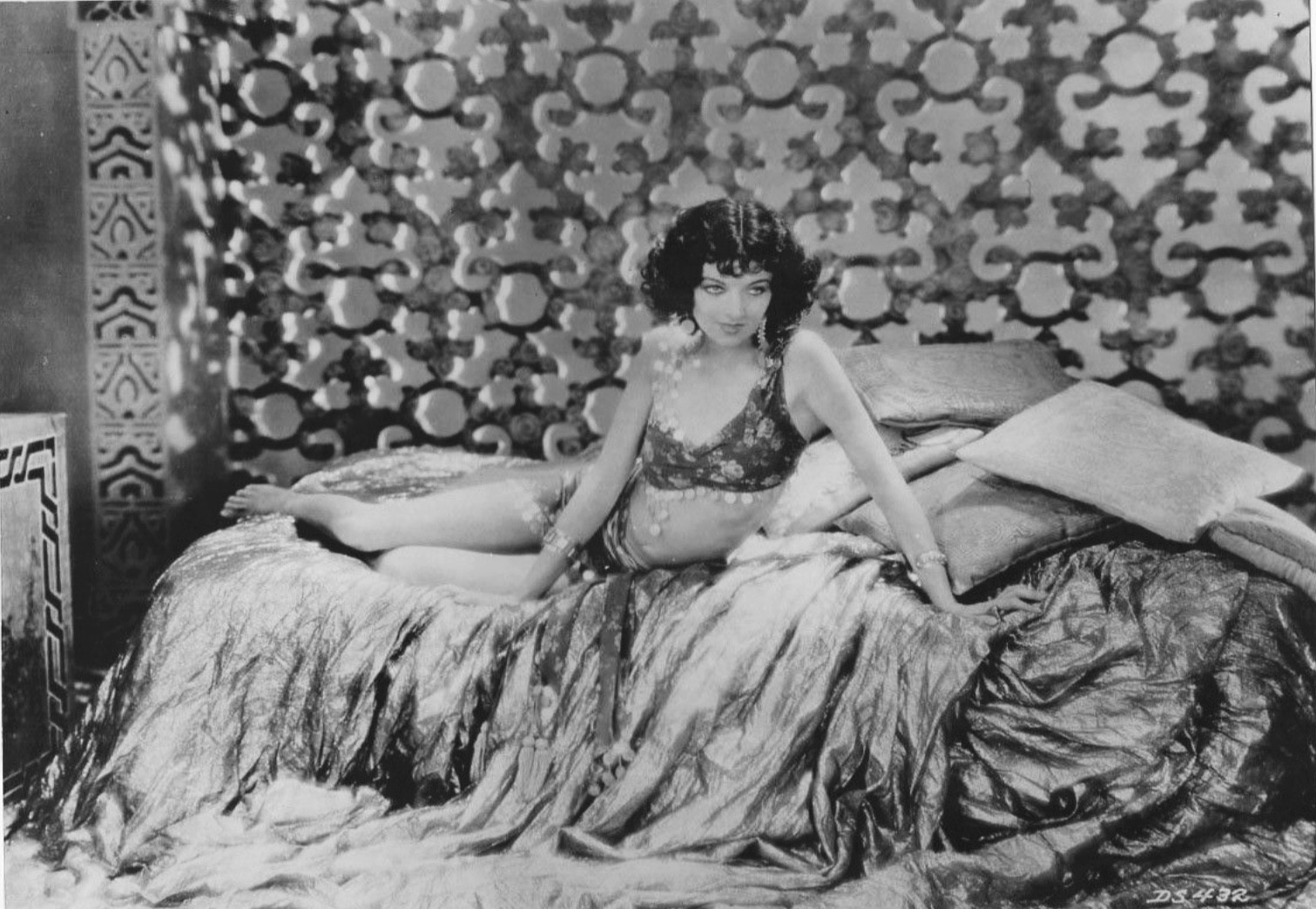 Howard didn't say anything about her, so I guess she didn't make that much of an impression on him. Still, looking at her other photos, I might have to rethink her!  Anyway, she hails from Helena, Montana, and grew up on a ranch. Her father died in the 1919 Pandemic and the family relocated to California. There, she was enrolled in Westlake School for Girls, but she was soon involved in theater and the teachers objected. So, she ended up at Venice High School. She left school to help with the family finances, ended up in theater, and by 1925, was appearing in silent films. As it turns out, she played either in roles as a "vamp" or a "femme fatale." That explains that. It was the role of Nora Charles that changed that direction and her career took off. To me, outside of The Maltese Falcon, the Thin Man series was the best thing Dashiell Hammett ever did. She acted in movies up until 1980 and on television up until 1982. Here is a clip of her as Azuri in The Desert Song (1929): |
|
|
|
Post by linefacedscrivener on Jan 21, 2022 15:18:19 GMT -5
 The Letter (1929) The Letter (1929)
“Of all the all-talking pictures I’ve really enjoyed, I can name them quickly: . . . The Letter.” -Robert E. Howard to Harold Preece, ca. September 1929 Release Date: April 13, 1929 REH Rating: * * * * *
The Letter (1929) is an interesting favorable selection for Howard as it is unlike most of the other movies he has rated so highly. The film is based on a play by the same name by the popular writer W. Somerset Maugham. Premiering on stage in 1927, the play’s popularity led to the filming of the story. The American Film Institute provides the following synopsis of the movie: "Marooned on a rubber plantation in the East Indies, Leslie Crosbie turns to Geoffrey Hammond for the love and diversion that she does not find with her husband. Hammond falls in love with a Chinese woman, however, and Leslie shoots him dead. Placed on trial for her life, Leslie convinces both the jury and her husband that she killed Hammond in defense of her honor. The Chinese woman has an incriminating letter written by Leslie to Hammond, however, and Leslie must pay to recover it. Her husband foots the bill, and Leslie is faced with a bankrupt and loveless future." The incriminating letter comes in early when Leslie’s husband leaves and she sends a letter to Geoffrey via a house-servant, hoping he will come visit. During the trial, she makes up the lie of self-defense, but everything unravels because of "The Letter." The film, released on 6 reels, ran for 62 minutes. It was released as an all-talking film, though a silent version was also made available as many movie theaters were still in the process of making the transition to sound. The film is available widely today and versions differ in quality, but here is one of them for your viewing pleasure: |
|
|
|
Post by johnnypt on Jan 21, 2022 17:44:18 GMT -5
 The Desert Song (1929) The Desert Song (1929)
“The Desert Song—gah! Pardon me while I vomit.” —Robert E. Howard to Harold Preece, ca. September 1929 The other female lead, pictured above, was Myrna Loy (August 2, 1905 – December 14, 1993). Now, I am very familiar with Myrna Loy and that is not how I usually think of Myrna Loy. She made some great movies during her career, including M r. Blandings Builds his Dream House (1948), The Best Years of Our Lives (1946), and The Red Pony (1949). When I hear her name I think of either The Thin Man series in which she played Nora Charles (great movies) or as the mother in Cheaper by the Dozen (1950). Like this:  I certainly never thought of her as a sex-kitten like in this movie here:  Howard didn't say anything about her, so I guess she didn't make that much of an impression on him. Still, looking at her other photos, I might have to rethink her!  Anyway, she hails from Helena, Montana, and grew up on a ranch. Her father died in the 1919 Pandemic and the family relocated to California. There, she was enrolled in Westlake School for Girls, but she was soon involved in theater and the teachers objected. So, she ended up at Venice High School. She left school to help with the family finances, ended up in theater, and by 1925, was appearing in silent films. As it turns out, she played either in roles as a "vamp" or a "femme fatale." That explains that. It was the role of Nora Charles that changed that direction and her career took off. To me, outside of The Maltese Falcon, the Thin Man series was the best thing Dashiell Hammett ever did. She acted in movies up until 1980 and on television up until 1982. Here is a clip of her as Azuri in The Desert Song (1929): Myrna Loy was HOT in those early films! William Powell tamed her on screen. Very underappreciated actress. |
|
|
|
Post by johnnypt on Jan 21, 2022 17:45:28 GMT -5
 The Letter (1929) The Letter (1929)
“Of all the all-talking pictures I’ve really enjoyed, I can name them quickly: . . . The Letter.” -Robert E. Howard to Harold Preece, ca. September 1929 Release Date: April 13, 1929 REH Rating: * * * * *
The Letter (1929) is an interesting favorable selection for Howard as it is unlike most of the other movies he has rated so highly. The film is based on a play by the same name by the popular writer W. Somerset Maugham. Premiering on stage in 1927, the play’s popularity led to the filming of the story. The American Film Institute provides the following synopsis of the movie: "Marooned on a rubber plantation in the East Indies, Leslie Crosbie turns to Geoffrey Hammond for the love and diversion that she does not find with her husband. Hammond falls in love with a Chinese woman, however, and Leslie shoots him dead. Placed on trial for her life, Leslie convinces both the jury and her husband that she killed Hammond in defense of her honor. The Chinese woman has an incriminating letter written by Leslie to Hammond, however, and Leslie must pay to recover it. Her husband foots the bill, and Leslie is faced with a bankrupt and loveless future." The incriminating letter comes in early when Leslie’s husband leaves and she sends a letter to Geoffrey via a house-servant, hoping he will come visit. During the trial, she makes up the lie of self-defense, but everything unravels because of "The Letter." The film, released on 6 reels, ran for 62 minutes. It was released as an all-talking film, though a silent version was also made available as many movie theaters were still in the process of making the transition to sound. The film is available widely today and versions differ in quality, but here is one of them for your viewing pleasure: Wonder what he would've thought of the 1940 Bette Davis version. |
|
|
|
Post by bulbous on Jan 22, 2022 9:05:59 GMT -5
I agree on Myrna Loy! Definitely one of my favorite actresses. About the only movie of hers that I've seen before her Thin Man makeover is The Mask of Fu Manchu (1932) where she plays Fu's daughter! Unfortunately, Howard never mentions if he saw that film in his letters, but it would be interesting to see what he thought of it as he was quite familiar with the stories and even wrote parodies of the villainous Oriental Master in his letters to Clyde Smith.
|
|
|
|
Post by linefacedscrivener on Jan 24, 2022 15:57:38 GMT -5
 The Letter (1929) The Letter (1929)
“Of all the all-talking pictures I’ve really enjoyed, I can name them quickly: . . . The Letter.” -Robert E. Howard to Harold Preece, ca. September 1929 Release Date: April 13, 1929 REH Rating: * * * * *
The Letter (1929) is an interesting favorable selection for Howard as it is unlike most of the other movies he has rated so highly. The film is based on a play by the same name by the popular writer W. Somerset Maugham. Premiering on stage in 1927, the play’s popularity led to the filming of the story. The American Film Institute provides the following synopsis of the movie: "Marooned on a rubber plantation in the East Indies, Leslie Crosbie turns to Geoffrey Hammond for the love and diversion that she does not find with her husband. Hammond falls in love with a Chinese woman, however, and Leslie shoots him dead. Placed on trial for her life, Leslie convinces both the jury and her husband that she killed Hammond in defense of her honor. The Chinese woman has an incriminating letter written by Leslie to Hammond, however, and Leslie must pay to recover it. Her husband foots the bill, and Leslie is faced with a bankrupt and loveless future." The incriminating letter comes in early when Leslie’s husband leaves and she sends a letter to Geoffrey via a house-servant, hoping he will come visit. During the trial, she makes up the lie of self-defense, but everything unravels because of "The Letter." The film, released on 6 reels, ran for 62 minutes. It was released as an all-talking film, though a silent version was also made available as many movie theaters were still in the process of making the transition to sound. The film is available widely today and versions differ in quality, but here is one of them for your viewing pleasure: Wonder what he would've thought of the 1940 Bette Davis version. I never saw the 1940 version as I really do not like Bette Davis. Was it any good? At the start of this version, I didn't really like it, but there was something compelling about it so that by the end, I actually really liked this one. A bit melodramatic, but that was part of what I liked/disliked. |
|
|
|
Post by linefacedscrivener on Jan 24, 2022 16:00:17 GMT -5
I agree on Myrna Loy! Definitely one of my favorite actresses. About the only movie of hers that I've seen before her Thin Man makeover is The Mask of Fu Manchu (1932) where she plays Fu's daughter! Unfortunately, Howard never mentions if he saw that film in his letters, but it would be interesting to see what he thought of it as he was quite familiar with the stories and even wrote parodies of the villainous Oriental Master in his letters to Clyde Smith. Yep, I remember that one. I used to watch all the Fu Manchu and Charlie Chan movies when I was a kid. You had to think Howard saw the film, unless of course he was too busy or it never came to any of the local theaters. As big a fan of Sax Rohmer and the fact he had a lot of the novels, one would think he saw it. There really seems to be a long list of these films where there is no evidence Howard ever saw them, top of which, of course, is King Kong. |
|
|
|
Post by johnnypt on Jan 24, 2022 19:55:29 GMT -5
Wonder what he would've thought of the 1940 Bette Davis version. I never saw the 1940 version as I really do not like Bette Davis. Was it any good? At the start of this version, I didn't really like it, but there was something compelling about it so that by the end, I actually really liked this one. A bit melodramatic, but that was part of what I liked/disliked. It's considered one of her best films and performances. Wyler directed it and Herbert Marshall appears in that version as well as this one. |
|
|
|
Post by bulbous on Jan 25, 2022 11:04:50 GMT -5
I agree on Myrna Loy! Definitely one of my favorite actresses. About the only movie of hers that I've seen before her Thin Man makeover is The Mask of Fu Manchu (1932) where she plays Fu's daughter! Unfortunately, Howard never mentions if he saw that film in his letters, but it would be interesting to see what he thought of it as he was quite familiar with the stories and even wrote parodies of the villainous Oriental Master in his letters to Clyde Smith. Yep, I remember that one. I used to watch all the Fu Manchu and Charlie Chan movies when I was a kid. You had to think Howard saw the film, unless of course he was too busy or it never came to any of the local theaters. As big a fan of Sax Rohmer and the fact he had a lot of the novels, one would think he saw it. There really seems to be a long list of these films where there is no evidence Howard ever saw them, top of which, of course, is King Kong. I seem to remember reading several years ago on Damon Sasser's Two-Gun Raconteur blog an article by someone arguing that there is evidence Howard saw Kong, but I can't find it on the Wayback machine site. It would have been great to get his opinion on the great movies of the first half of the 1930's that are now classics in their genres and that would have been right up his alley of interest: Captain Blood, Lives of a Bengal Lancer, Frankenstein, Bride of Frankenstein, Tarzan the Ape Man, Tarzan and His Mate, The Eagle and the Hawk, Dracula--you just know he would have done everything he could to go see Captain Blood and Lives of a Bengal Lancer at the very least. |
|
|
|
Post by johnnypt on Jan 25, 2022 12:48:49 GMT -5
Yep, I remember that one. I used to watch all the Fu Manchu and Charlie Chan movies when I was a kid. You had to think Howard saw the film, unless of course he was too busy or it never came to any of the local theaters. As big a fan of Sax Rohmer and the fact he had a lot of the novels, one would think he saw it. There really seems to be a long list of these films where there is no evidence Howard ever saw them, top of which, of course, is King Kong. I seem to remember reading several years ago on Damon Sasser's Two-Gun Raconteur blog an article by someone arguing that there is evidence Howard saw Kong, but I can't find it on the Wayback machine site. It would have been great to get his opinion on the great movies of the first half of the 1930's that are now classics in their genres and that would have been right up his alley of interest: Captain Blood, Lives of a Bengal Lancer, Frankenstein, Bride of Frankenstein, Tarzan the Ape Man, Tarzan and His Mate, The Eagle and the Hawk, Dracula--you just know he would have done everything he could to go see Captain Blood and Lives of a Bengal Lancer at the very least. Yeah, there's a lot in the 30s before his death that were right up his alley. I also remember seeing something about him possibly seeing Kong but I'd have no idea where. |
|













